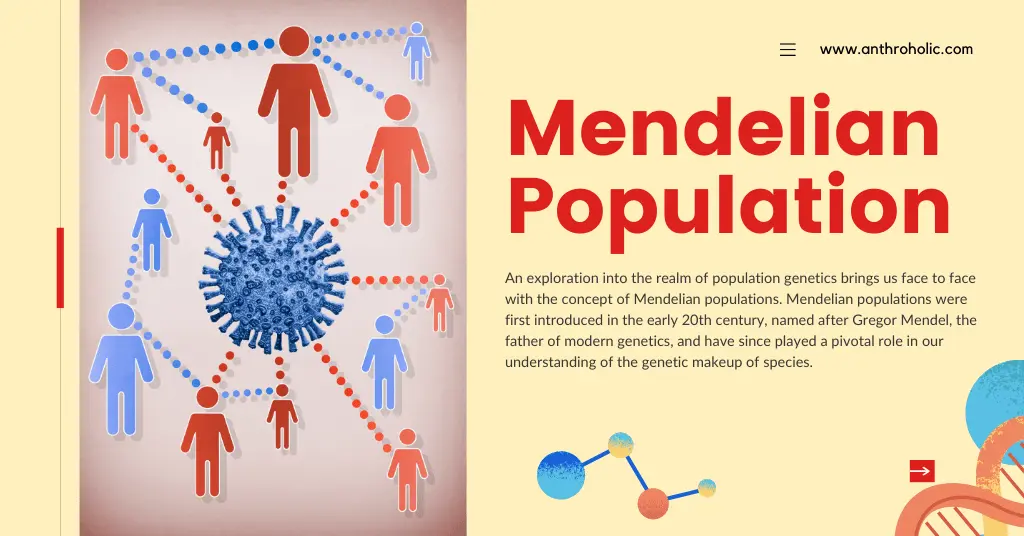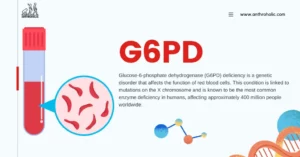AI Answer Evaluation Platform Live Now. Try Free Answer Evaluation Now
Mendelian Population
An exploration into the realm of population genetics brings us face to face with the concept of Mendelian populations. Mendelian populations were first introduced in the early 20th century, named after Gregor Mendel, the father of modern genetics, and have since played a pivotal role in our understanding of the genetic makeup of species.

The Principle of Mendelian Inheritance
Before we delve into the specifics of Mendelian populations, it is important to comprehend the underpinning principle of Mendelian inheritance. Gregor Mendel’s genetic experiments with pea plants, performed in the mid-19th century, led to the elucidation of the fundamental laws of inheritance. These laws encapsulate the mechanics of heredity and form the basis of modern genetics (Bateson, 1909).
Mendelian Populations: A Definition
In the simplest of terms, a Mendelian population is a breeding group where random mating occurs, and Mendel’s principles of inheritance can be applied (Hartl & Clark, 1997). These populations are indispensable to the study of genetic variation and evolution within a species. Each member of a Mendelian population shares a common gene pool and exchanges genetic material freely.
Characteristics of Mendelian Populations
Mendelian populations possess certain defining characteristics. Here are the key features:
- Random mating: The mating within a Mendelian population is random, i.e., there are no restrictions or preferences based on genotype or phenotype.
- Large population size: Mendelian populations are generally large in size to ensure genetic diversity and reduce the effects of genetic drift.
- Absence of selection, migration, and mutation: These populations ideally exhibit no selection, migration, or mutation pressures, enabling gene frequencies to remain constant over generations.
- Shared gene pool: All individuals within the population have the ability to contribute to the gene pool.
The Gene Pool and Allele Frequencies
In a Mendelian population, the collective sum of all the genes and their different forms, or alleles, constitutes the gene pool. The relative proportion of each allele in the population is referred to as the allele frequency. Understanding these frequencies is crucial to the study of genetic variation and evolution (Futuyma & Kirkpatrick, 2017).
Calculating Allele Frequencies
Allele frequencies can be calculated using the Hardy-Weinberg equilibrium, a principle that stipulates that in a large, randomly mating population with no mutation, migration, or selection, the allele and genotype frequencies will remain constant from one generation to the next. This provides a baseline expectation for allele frequencies in a Mendelian population.
The Hardy-Weinberg equilibrium is represented by the equation p^2 + 2pq + q^2 = 1, where:
- p^2 is the frequency of homozygotes for one allele (AA)
- 2pq is the frequency of heterozygotes (Aa)
- q^2 is the frequency of homozygotes for the other allele (aa)
- p is the frequency of one allele (A)
- q is the frequency of the other allele (a)
These frequencies can be easily calculated given the genotypic distribution in the population.
The Allele Frequency Distribution
The distribution of allele frequencies within a Mendelian population provides critical insights into the genetic variation within the population. The table below presents a simplified example of the allele frequency distribution:
| Allele | Frequency |
|---|---|
| A | 0.6 |
| a | 0.4 |
In this hypothetical Mendelian population, the frequency of allele A is 0.6, and the frequency of allele a is 0.4.
Genetic Variation in Mendelian Populations
Genetic variation is the bedrock of evolution, and Mendelian populations serve as the stage upon which this play of variation and selection unfolds. This variation primarily occurs due to mutations, gene flow, genetic drift, and selection.
Mutations
Mutations are changes in the DNA sequence and are the primary source of new genetic material. They introduce novel alleles into the gene pool and increase genetic variation.
Gene Flow
Gene flow, or migration, involves the movement of individuals and their genetic material from one population to another. This transfer can introduce new alleles into the population and change allele frequencies.
Genetic Drift
Genetic drift is a random process that changes allele frequencies over generations. It can lead to the loss or fixation of alleles and plays a significant role in shaping genetic variation in small populations.
Selection
Selection, both natural and artificial, influences allele frequencies by favoring individuals with certain genotypes that enhance survival and reproduction. Over generations, selection can lead to significant shifts in allele frequencies.
Conclusion
Understanding Mendelian populations offers key insights into the mechanisms of genetic variation and evolution. These breeding groups, governed by the laws of Mendelian inheritance, are vital to our understanding of species and their adaptation to changing environments. The comprehensive study of Mendelian populations is therefore an essential aspect of modern genetics and evolutionary biology.
References
- Bateson, W. (1909). Mendel’s Principles of Heredity. Cambridge University Press.
- Futuyma, D. J., & Kirkpatrick, M. (2017). Evolution. Sinauer Associates.
- Hartl, D. L., & Clark, A. G. (1997). Principles of Population Genetics. Sinauer Associates.



